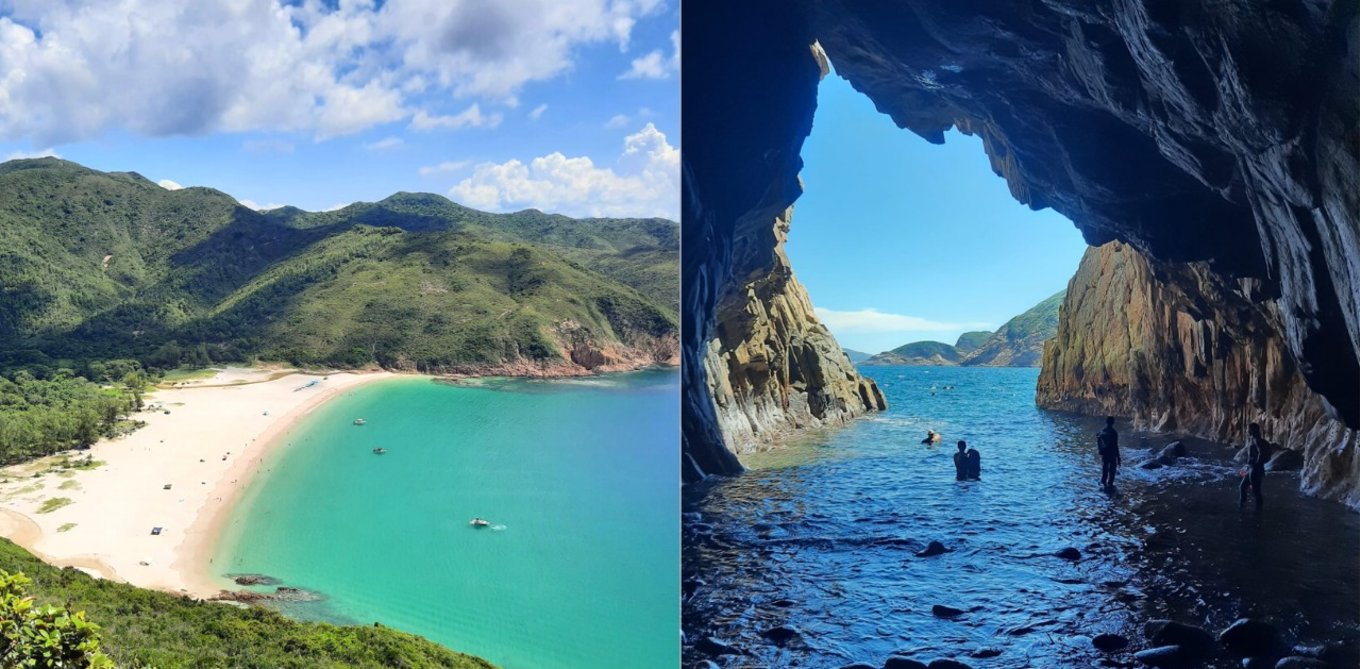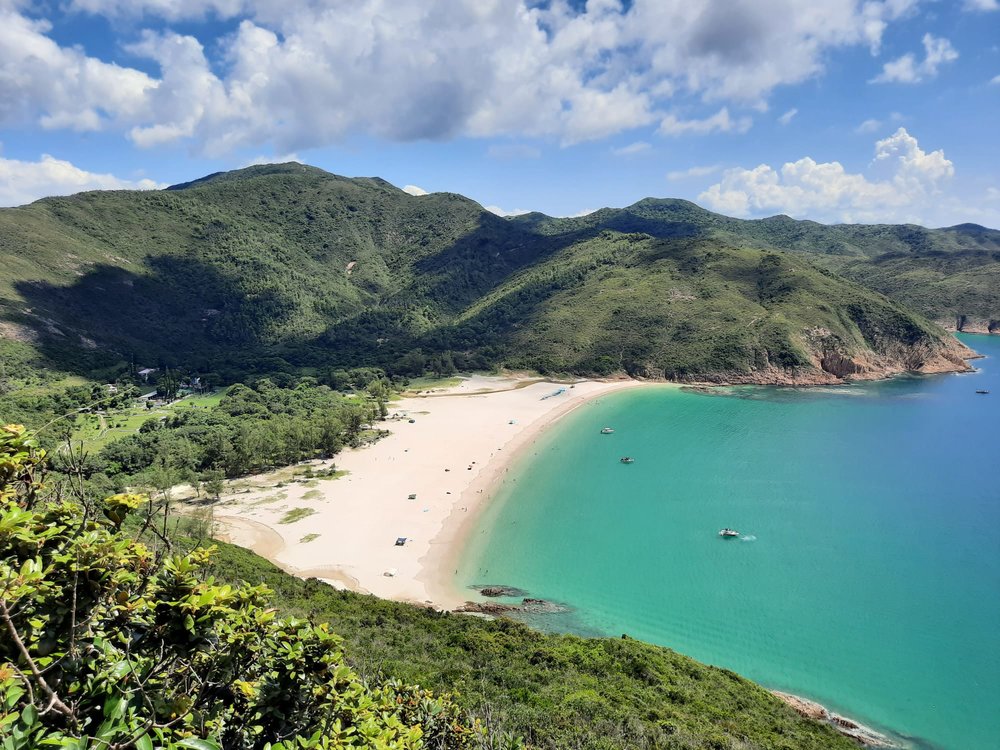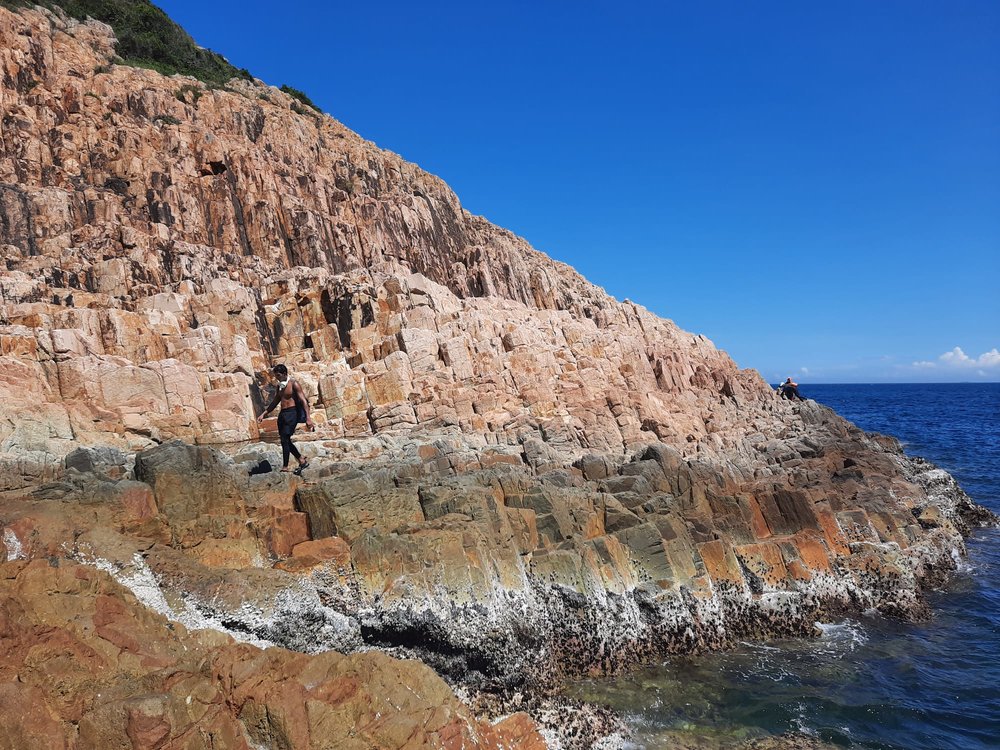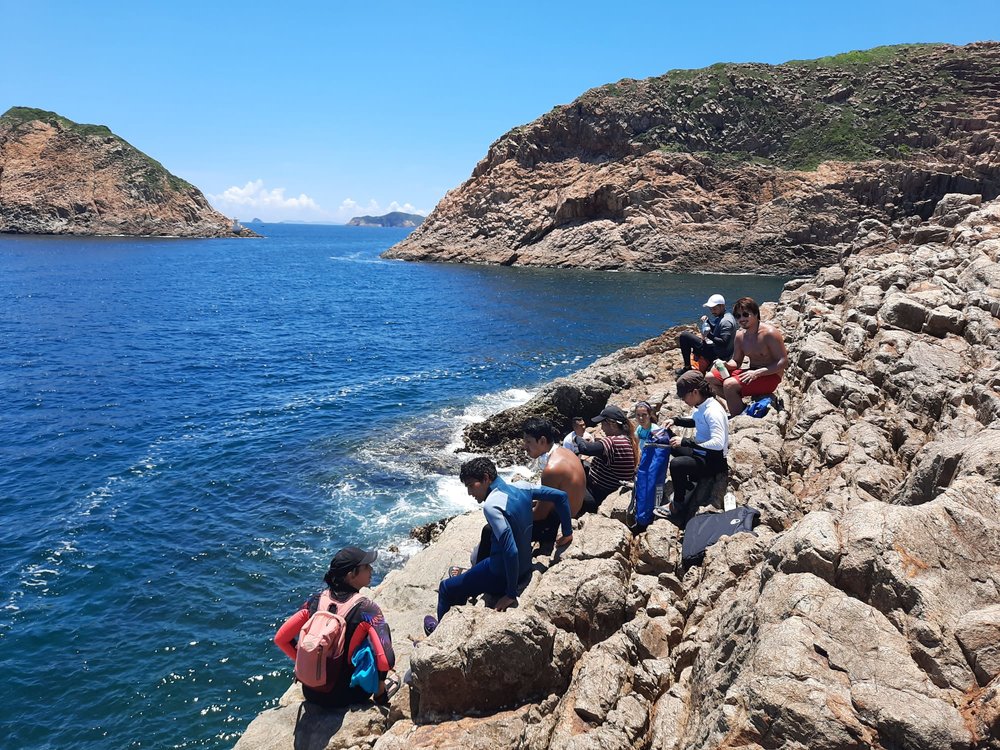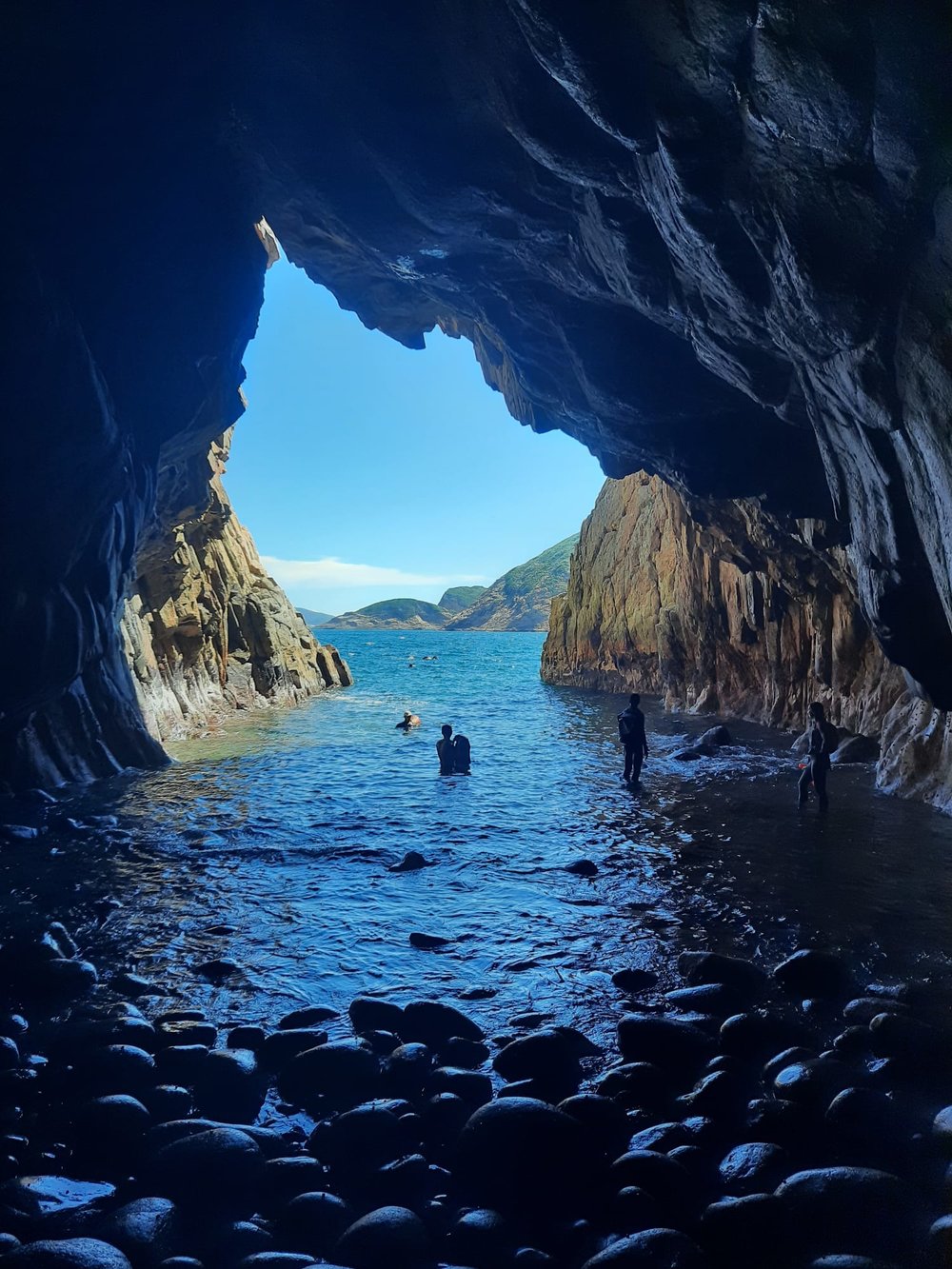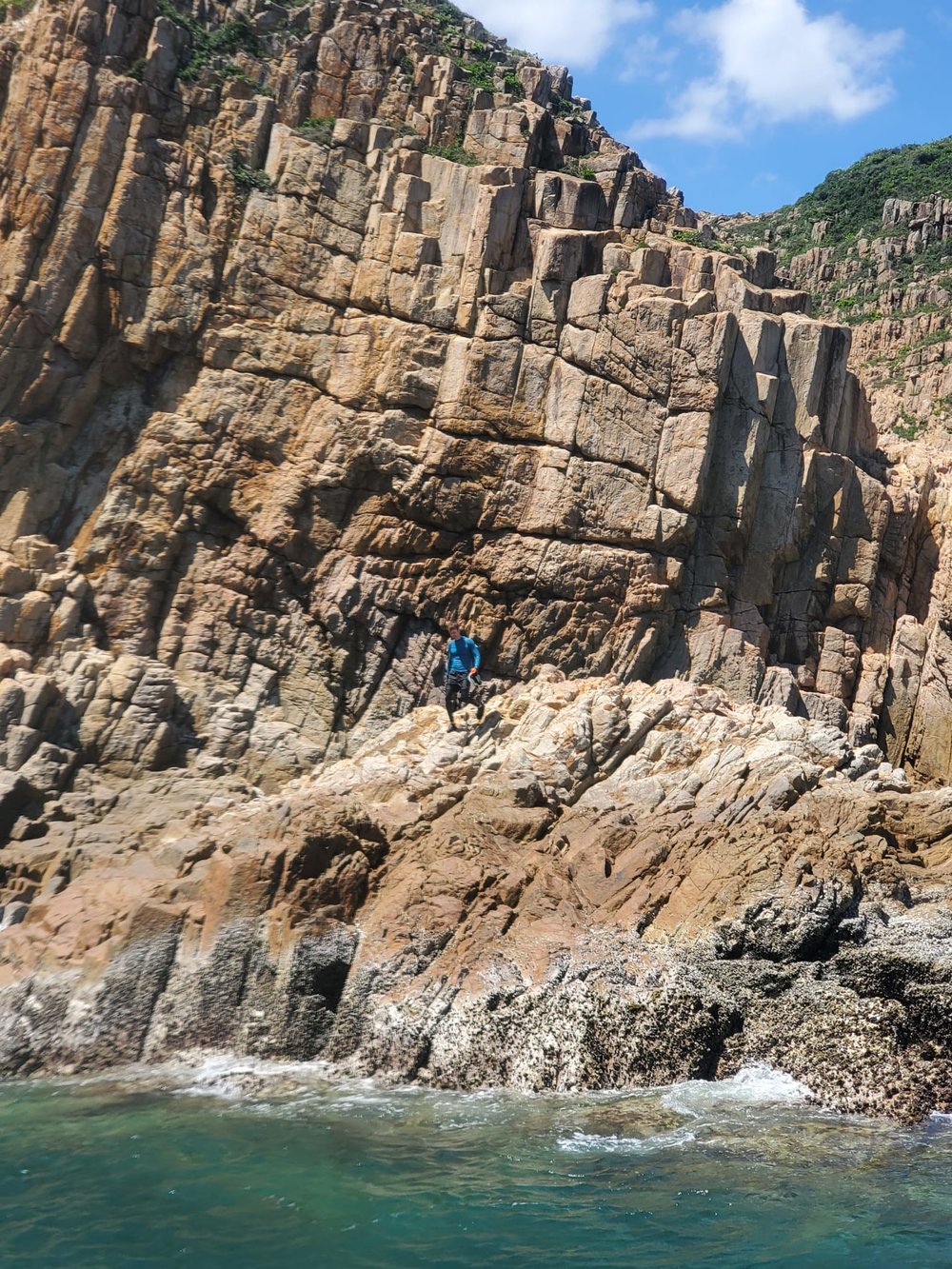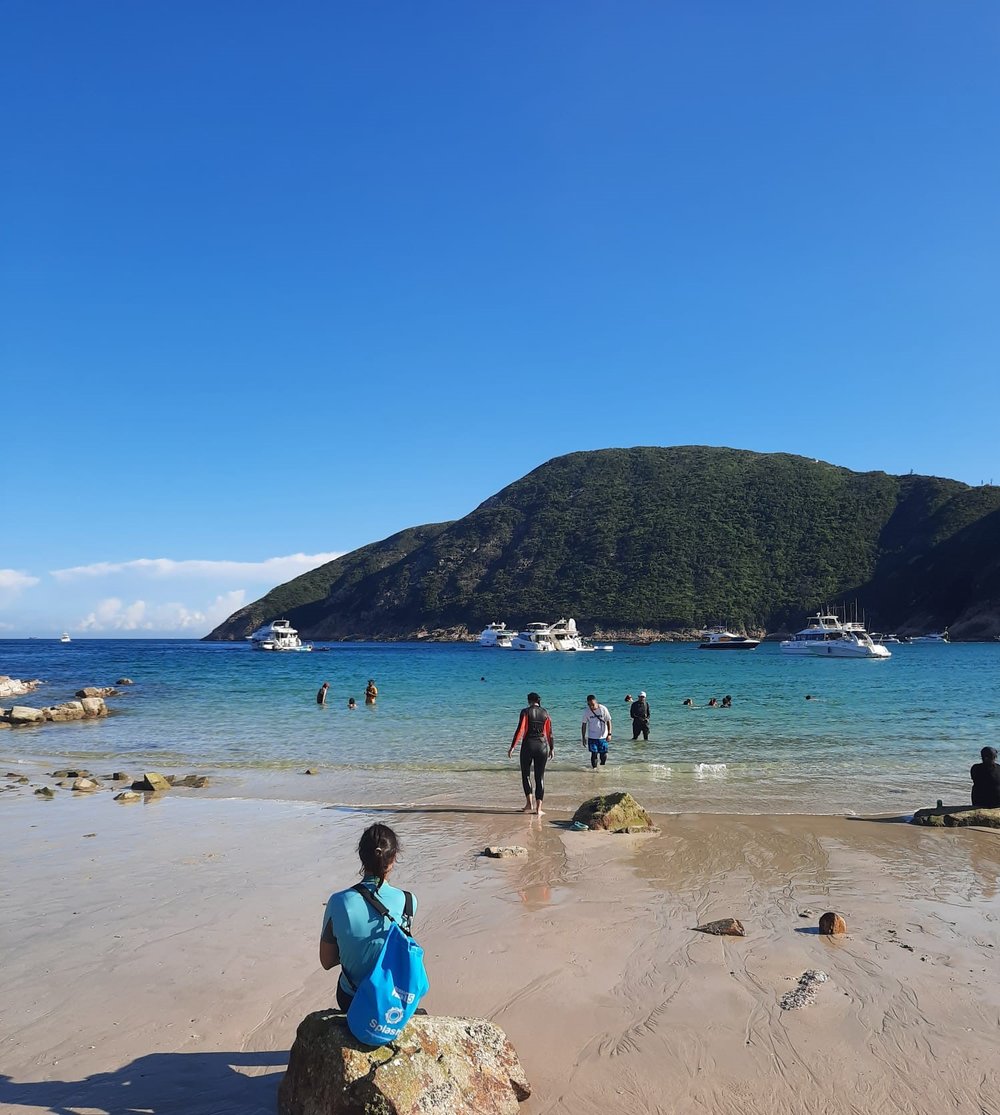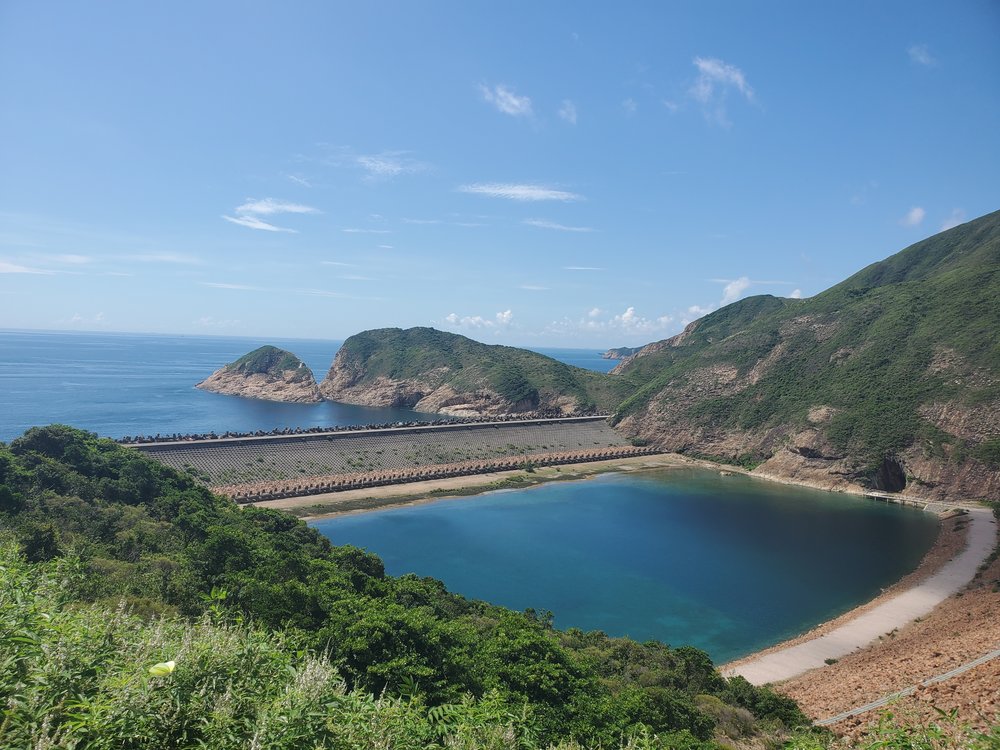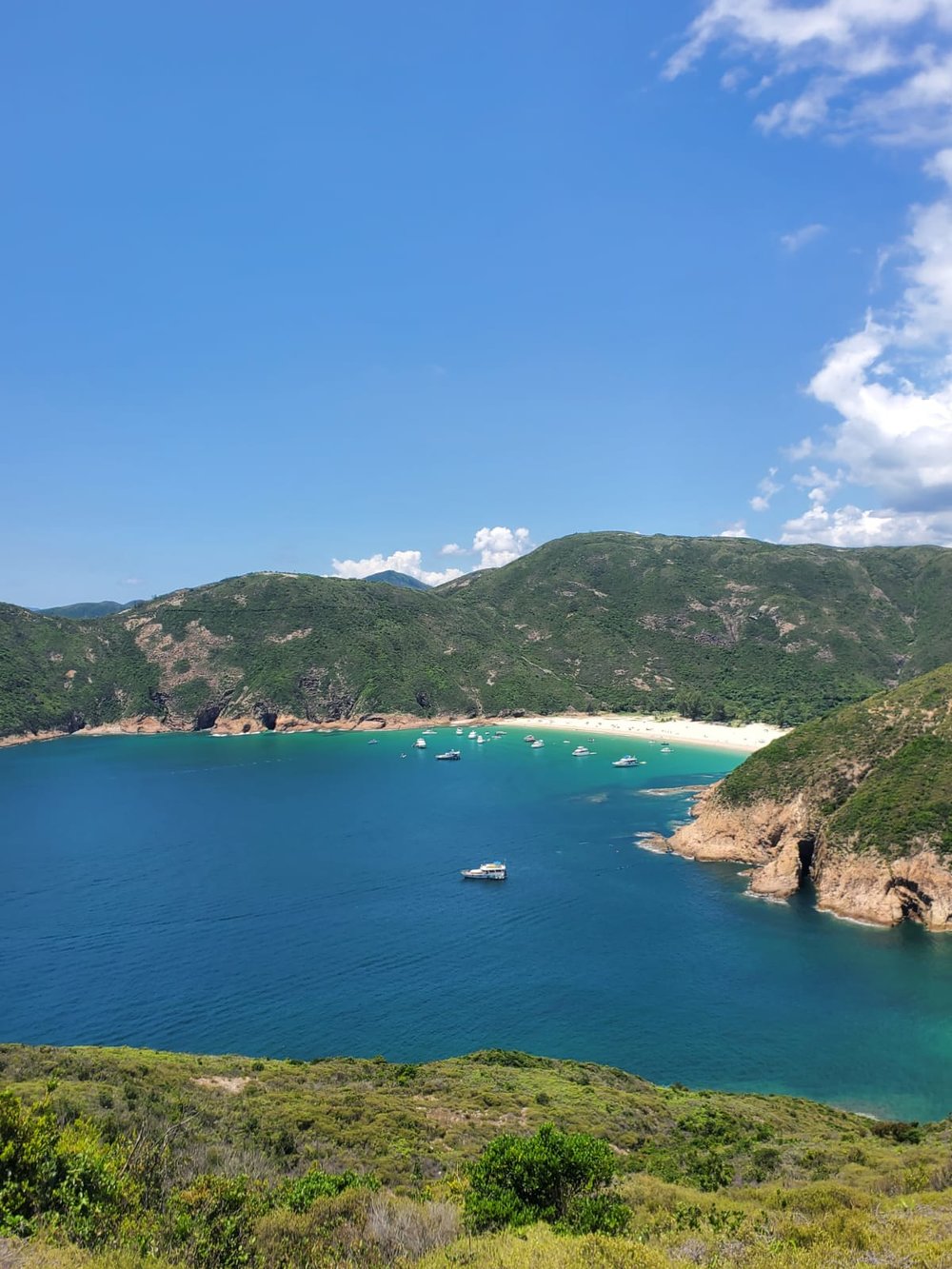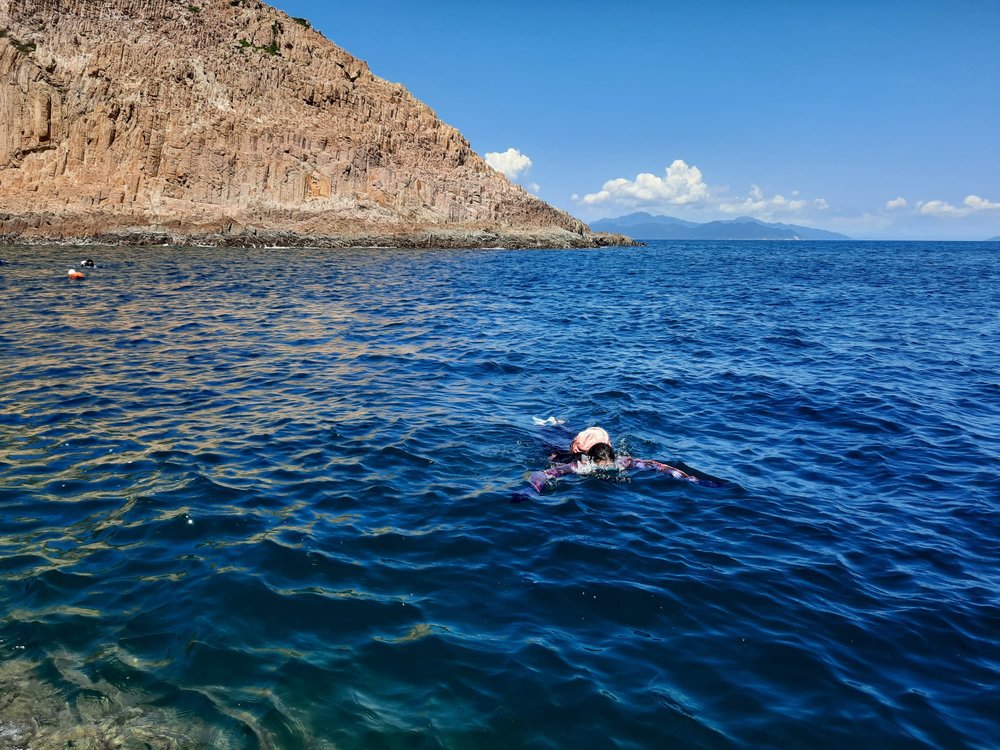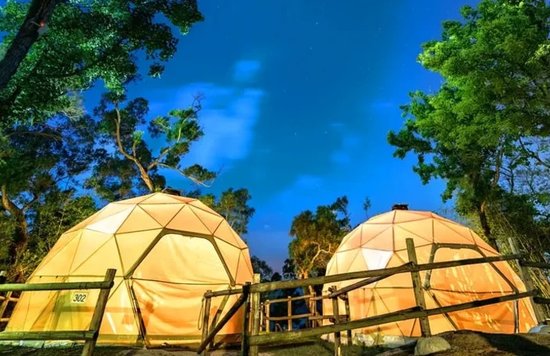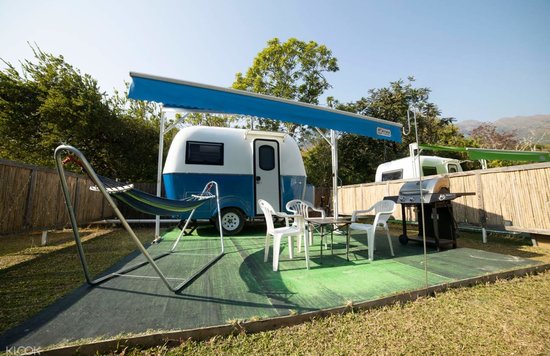Sea caves, cliff jumping and sea urchin encounters on a coasteering adventure in Sai Kung
I’m a certified couch potato so it was quite the identity crisis when Hong Kong made me fall in love with the great outdoors. Still, I set my boundaries. Hiking? Sure! Sea kayaking? Grueling but I can handle it once in a while. Coasteering? When my boyfriend floated the idea it was a firm “no” from me. Just explaining what it involves is exhausting: open water swimming, scrambling, rock climbing, cliff jumping. That’s too many verbs for one day, thank you very much.
But I guess FOMO (fear of missing out) is a powerful thing. Eventually, I heard enough stories about my friends’ coasteering trips that I caved in. Fast forward a couple of months, I was on a minibus to Sai Kung, slathered in sunscreen and about to go coasteering for the first time. This is how it went.
Sunny with a chance of sea urchin
When we arrived at our starting point, Long Ke Wan beach, the temptation to call off the whole thing and stay at the beach was almost irresistible. Squint and you might have mistaken Sai Kung for Hawaii that day. The water was so clear the boats seemed to be levitating. There were just a few people around and a couple of junks docked in the bay. Perfect day to laze on the beach all day.
But lazing wasn’t in the schedule. Our group began a hike to get to the coasteering jumping-off point. The trail went from barely discernible to bushwacking, with a bit of scrambling thrown in for good measure. After two hours, we found ourselves at what seemed like a dead-end: looking down at the splashing waves from the top of a cliff. “We start down there.” I covered most of the way down sliding on my bum.
When we finally made it to the start of the route, one thing became obvious: there is no route. In coasteering, your route is determined by access and exit points. We would follow the coast all the way back to Long Ke Wan, our exit. How we did that was entirely up to each of us. You could walk or rock climb most of the way, you could swim most of the way, you could do a combination of both. Where to jump in or climb onshore was entirely up to our judgment.
Swimming across open water, I wondered if the boats passing by would mistake us for castaways and initiate a rescue mission. We sure looked the part. Scrambling onto a rocky shore covered in barnacles felt more like a survival mission than a Sunday pastime. But as I was getting the hang of it, I couldn’t help but start enjoying the trip.
I thought I’d seen and done everything in Hong Kong. Suddenly, I was discovering it from a completely different perspective. I was standing face-to-face with the famous hexagonal rock columns I’d only seen from a distance before. I was snorkeling with the type of colorful fish I didn’t even know existed here. I was swimming inside a sea cave, hearing the sound of waves echoing back to me, magnified, from the dark interior. Four hours brought on such a wealth of new experiences I was high on endorphins for a whole week after.
By the time we made it back to Long Ke Wan, it felt like days had passed. There’s no way to describe the feeling of fine white sand under your feet after stepping on sharp rocks all day. It was golden hour and the water was still crystal clear. I stripped my full-finger gloves, water shoes and long sleeves and went for the most delicious swim.
Planning your Hong Kong coasteering adventure
Coasteering is an off-the-grid adventure. There is no such thing as a coasteering “trail”. To DIY this, you’ll need to be pretty good at navigating your way around. If you’d rather go with an experienced guide, HK Outsider is a community of outdoor enthusiasts that organizes guided coasteering adventures (as well as off-trail hikes, stream trekking and canyoning).
If you’re set on organizing your own coasteering trip, HK Outdoor Adventures blog is an amazing resource. The route described above is from the Long Ke coasteering blog.
One thing to note is that the route we did is classified as intermediate. I was comfortable doing it as a beginner only because I went with a bigger group of experienced friends. If it’s your first time, I recommend picking a route marked as “easy”.
There are also several “dry” routes on the list which don’t involve swimming so you won’t have to worry about timing your outing with the tide or checking the swell. Never go coasteering alone.
Want to see the UNESCO Geopark formations in Sai Kung up close but you’re not keen on coasteering? You might want to try a guided sea kayaking tour. Sea kayaking is a solid dose of exercise too but there’s a lower chance of close barnacle encounters, so that’s something.
Coasteering equipment: what to bring
Let me tell you one thing: coasteering is not a walk in the park. You’ll face oppressive heat, sea swell and, potentially, minefields of sea urchins all in one outing.
The right equipment can make or break your experience so make sure you have the following:
- Closed-toe shoes. There are specialized canyoning shoes but if you don’t want to invest on your first try, wear basic water shoes or running shoes that you don’t mind getting wet. Ideally, the shoes have laces or straps so they don’t slide off your feet while swimming.
- Full finger gloves for scrambling on sharp rocks.
- Swimming goggles. I learned the hard way that water shoes from Decathlon don’t protect you from sea urchins. You’re going to want to watch your step underwater as you scramble back onshore. Goggles are essential!
- Full-length leggings or sport knee pads. Again, to protect you from the rocks and barnacles.
- Plenty of water (in a refillable bottle). For reference, I brought a full 3-liter water bladder on this trip.
- A dry bag for all your stuff. Keep it extra safe by getting a small dry bag for your electronics and wallet, and putting it inside a bigger dry bag. Make sure everything is sealed properly.
- A rashguard or a long-sleeve top to avoid scratches and sunburn.
- Reef-safe sunscreen.
- A small towel and a change of clothes (secured well inside a dry bag).
- All the food you need for the trip. On the trip I did, there was nowhere to buy food or water once you left Sai Kung Town.
Optional:
- Snorkeling gear. This might depend on where you’re going but the route I did in Sai Kung had some good snorkeling opportunities.
- Life jacket. Keeps you extra-safe but you shouldn’t fully rely on it. If you’re not a strong swimmer, you might want to stick to dry coasteering

